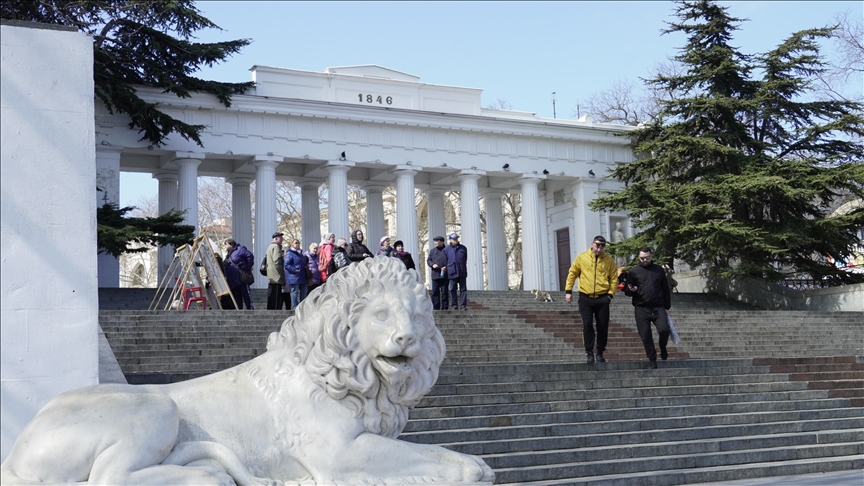Ms. Aidoo’s works explored the ghosts of the past such as colonialism and slavery
By Brian Murphy
June 9, 2023
Ama Ata Aidoo, a Ghanaian playwright and author who became one of Africa’s leading literary voices, exploring West African society through the eyes of women and the ghosts of the past such as colonial rule and slavery, died May 31 at 81.
A family statement announced the death but offered no additional details.
Ms. Aidoo’s career included stints in academia in the United States and political life at home as Ghana’s secretary for education in the early 1980s. The experiences helped shape some of the characters and struggles over more than a dozen novels, plays, short stories and volumes of poetry. Yet she said her work, at its core, was an extension of the oral storytelling traditions used by African women to pass down lore and collective wisdom.
“African women were feminists long before feminism,” Ms. Aidoo said.
She worked like a cultural anthropologist, sifting through layers of history — often rife with oppression and exploitation — in Ghana and other parts of West Africa. Nearly all her central figures were women trying to change their lives but facing challenges imposed by men or cultural forces bigger than themselves.
In Ms. Aidoo’s first play, “The Dilemma of a Ghost” (1964), a Ghanaian student returns home with his American wife, a Black woman who grapples with a new way of life, the historical weight of the slave trade and her ancestry, and the confusion of the post-colonial era.
“Changes: A Love Story,” a 1991 novel that won the Commonwealth Writers’ Prize for best book from Africa, was about a woman who divorces after suffering “marital rape” and then unhappily becomes one of the wives of a Muslim businessman.
In her 1977 semi-autobiographical novel, “Our Sister Killjoy,” Ms. Aidoo took aim at Western values through the racism and alienation felt by a Ghanaian student in Britain and Germany. Ms. Aidoo called Bavaria the “heart of darkness,” repurposing the title of Joseph Conrad’s novel set in Africa.
“Since we met you people 500 years ago, now look at us,” she said in a 1987 interview while discussing Europe’s heavy hand in Africa. “We’ve given everything, you are still taking. I mean where will the whole Western world be without us Africans? Our cocoa, timber, gold, diamond, platinum.”
“Everything you have is us,” she added. “I am not saying it. It’s a fact. And in return for all these, what have we got? Nothing.” (Part of her comments were used in a 2020 song, “Monsters You Made,” by Nigerian performer Burna Boy.)
Ms. Aidoo was widely described as one of Africa’s most prominent feminists. She tried to clarify her goals. Feminism, she said, was an “ideology, like socialism or pan-Africanism” that she supported but thought was too general. Ms. Aidoo saw her mission as trying to change the narrative around African women.
She took offense at what she called Western stereotypes of the “downtrodden wretch” in Africa — women seen as incapable of taking control of their own lives and futures.
“When people ask me rather bluntly every now and then whether I am a feminist, I not only answer yes, but I go on to insist that every woman and every man should be a feminist,” Ms. Aidoo said at an African women’s conference in 1998, “especially if they believe that Africans should take charge of African land, African wealth, African lives, and the burden of African development.”
A defining moment for her came when she was 15. A teacher asked her what type of career she envisioned. “Without knowing why or even how, I replied that I wanted to be a poet,” she recalled.
Four years later, she won a short story contest and was dazzled by seeing her name in print. She bought herself a new pair of shoes with the prize money.
“I had articulated a dream … it was a major affirmation for me as a writer,” she later wrote.
‘Long line of fighters’
Ama Ata Aidoo was born on March 23, 1942, in Abeadzi Kyiakor in a central region of what was known in the West as the Gold Coast, the region’s colonial name. Her twin brother was named Kwame Ata.
Their father was a local chief of the Fante people and was a strong supporter of education, building the village’s first schoolhouse. She called herself part of “a long line of fighters,” often citing her grandfather’s imprisonment and torture by British colonial authorities.
Ms. Aidoo, who for a time in her youth went by the first name Christina, received a degree in English from the University of Ghana in 1964, seven years after Ghana’s independence. Ms. Aidoo was awarded a two-year creative writing fellowship at Stanford University, then returned to Ghana in 1970 to begin a 12-year tenure as a lecturer at the University of Cape Coast.
Her second play, “Anowa,” which debuted in 1970, tackled questions of Africa’s indigenous slave trade in the 19th century through the life of an African woman whose husband becomes an enslaver. The couple’s lives end in tragedy.
After a coup in Ghana in late 1981 by a military officer, Jerry Rawlings, the new government lavished attention on the arts. Ms. Aidoo took the position of education secretary in January 1982, saying she thought “direct access to state power” would give her opportunities to grow education options, particularly for girls. Frustrated by the slow pace of reforms, she wrote her resignation letter after 18 months in the post.
She left for Zimbabwe in 1983, working on curriculum programs for the country’s education ministry. While in the capital, Harare, she wrote a collection of poems, “Someone talking to sometime” (1985), and a children’s book, “The Eagle and the Chickens and Other Stories” in 1986.
She was a writer-in-residence at the University of Richmond in 1989 and was a visiting professor in the Africana studies department at Brown University from 2003 to 2010. In 2000, she founded the Mbaasem Foundation in Ghana to support African women writers.
“I have always felt uncomfortable living abroad: racism, the cold, the weather, the food, the people,” she said in a 2003 interview published by the University of Alicante in Spain. “I also felt some kind of patriotic sense of guilt. Something like, Oh, my dear! Look at all the problems we have at home. What am I doing here?”
Survivors include a daughter. Complete information on survivors was not immediately available.
In 2014, Ms. Aidoo was asked on BBC’s “HARDtalk” program whether she constructs her women characters as a form of literary activism.
“People sometimes question me, for instance, ‘Why are your women so strong?’” she said. “And I say, ‘That is the only woman I know.’”
By Brian Murphy





